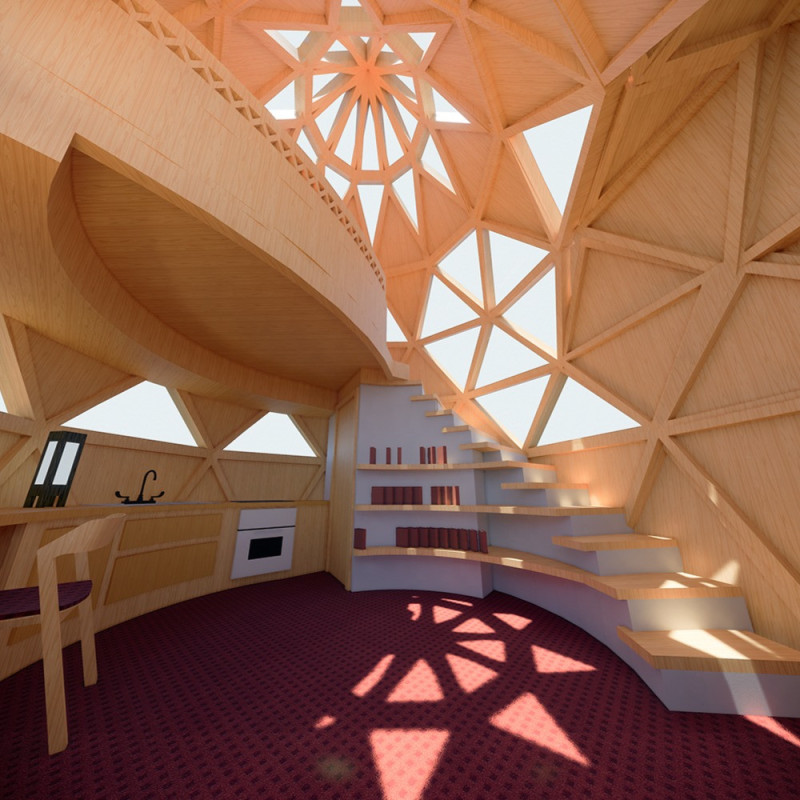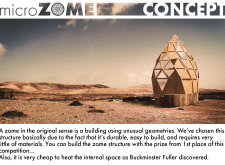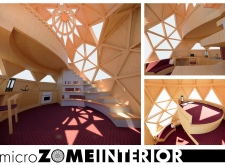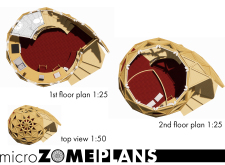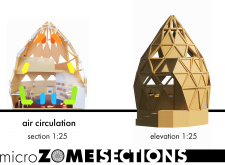5 key facts about this project
### Project Overview
MicroZome is situated in a desert environment, designed to meet the challenges of arid climates through sustainable architectural principles. The project draws inspiration from the geometric efficiency associated with Buckminster Fuller’s zome concept, focusing on durability, functionality, and minimal material usage. Its innovative design caters to the pressing demands of contemporary housing while promoting a reduced ecological footprint.
### Spatial Configuration and User Experience
The architectural layout features a series of interlocking triangular and hexagonal shapes, which contribute to both the structural integrity of the building and the aesthetic appeal. Inside, the circular interior transitions upwards in a loft-like manner, with a spiral staircase facilitating access to the second level. The design prioritizes natural light, employing extensive glazing to create a vibrant atmosphere that enhances the user experience. Functional zones within the space include work and living areas, equipped with essential amenities such as a kitchenette and study area, all curated to optimize usability and comfort.
### Material Selection and Sustainability
The choice of materials in MicroZome underscores its commitment to sustainability. Predominantly constructed using renewable wood, the framework establishes a warm interior ambience. Glass elements integrated into the exterior maximize light penetration while reducing energy demands. Although specific insulation materials are not detailed, the design emphasizes energy efficiency, ensuring comfortable internal temperatures with minimal energy consumption. Additionally, built-in storage solutions along the rounded walls maximize the functional use of limited floor space, contributing to an overall efficient design strategy.


